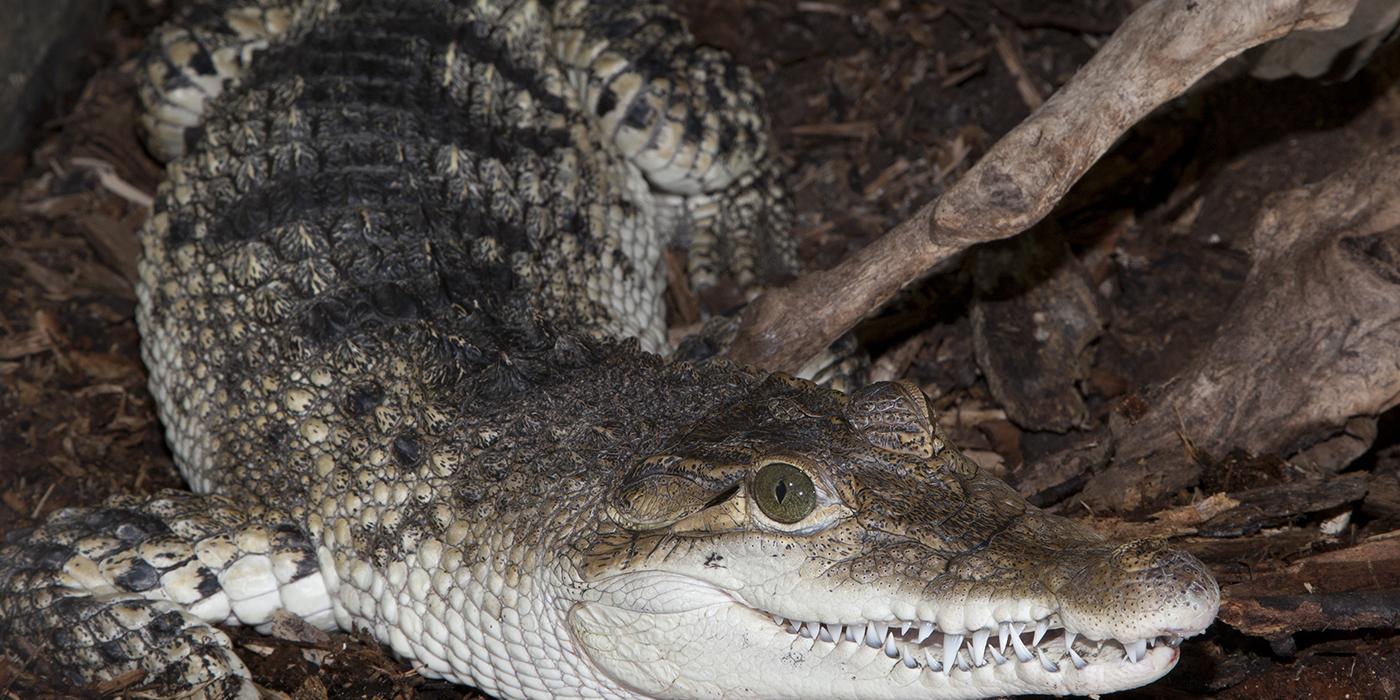Physical Description
The Philippine crocodiles is brown with black markings and heavily armored. It has a broad snout for a crocodile.
Size
It is a smaller member of the crocodile family, with males growing up to 10 feet (3 meters) long. Females are typically smaller.
Native Habitat
Philippine crocodiles were once prevalent throughout the Philippines but are currently only found in small, fragmented habitats on the islands of Dalupiri, Luzon and Mindanao. They primarily live in freshwater rivers, ponds and marshes.
Lifespan
Not enough information is known about this species to determine an average life span, but it is estimated to be between 70 and 80 years.
Food/Eating Habits
Philippine crocodiles eat fish, aquatic invertebrates, small mammals, other reptiles and some birds. At the Smithsonian's National Zoo, they receive crocodile pellets, smelt, rats and mice.
Reproduction and Development
Philippine crocodiles have been observed breeding in January. Their clutch size, or number of eggs laid, varies from seven to 30 eggs. The eggs hatch after incubating for between 65 and 85 days.
During the dry season, females may construct a mound nest of twigs, leaves and soil or they may construct a hole nest for their eggs. Unlike many other crocodilian species, both males and females actively take turns guarding the nest. Philippine crocodile eggs have shown evidence of temperature-dependent sex determination, meaning the temperature at which the egg incubates determines the sex of the baby crocodile inside.
Conservation Efforts
The Philippine crocodile is one of the most endangered crocodilian species, with estimates of wild populations fewer than 100. Their major threats include hunting and habitat destruction.
Since 2003, the Mabuwaya Foundation has worked with local populations to change the perception of this species, as well as to protect and create new habitat and nesting sites. They have been successful in routinely breeding this species.
Part of their conservation efforts include a "head start" program in which they release the young crocodiles into specially built, protected habitats. The foundation is financially supported by a cooperative agreement of zoos exhibiting this species, including the Smithsonian's National Zoo and Conservation Biology Institute.
Philippine crocodiles were considered a subspecies of the New Guinea crocodile (Crocodylus novaguineae). Not much is known about them, but recent conservation efforts and captive management programs are adding to the body of research.
Help this Species
- Reduce, reuse and recycle — in that order! Cut back on single-use goods, and find creative ways to reuse products at the end of their life cycle. Choose recycling over trash when possible.
- Support organizations like the Smithsonian’s National Zoo and Conservation Biology Institute that research better ways to protect and care for this animal and other endangered species. Consider donating your time, money or goods.
- Share the story of this animal with others. Simply raising awareness about this species can contribute to its overall protection.
Animal News

Leaf-tailed Gecko Treated for Skin Cancer With Chemotherapy



